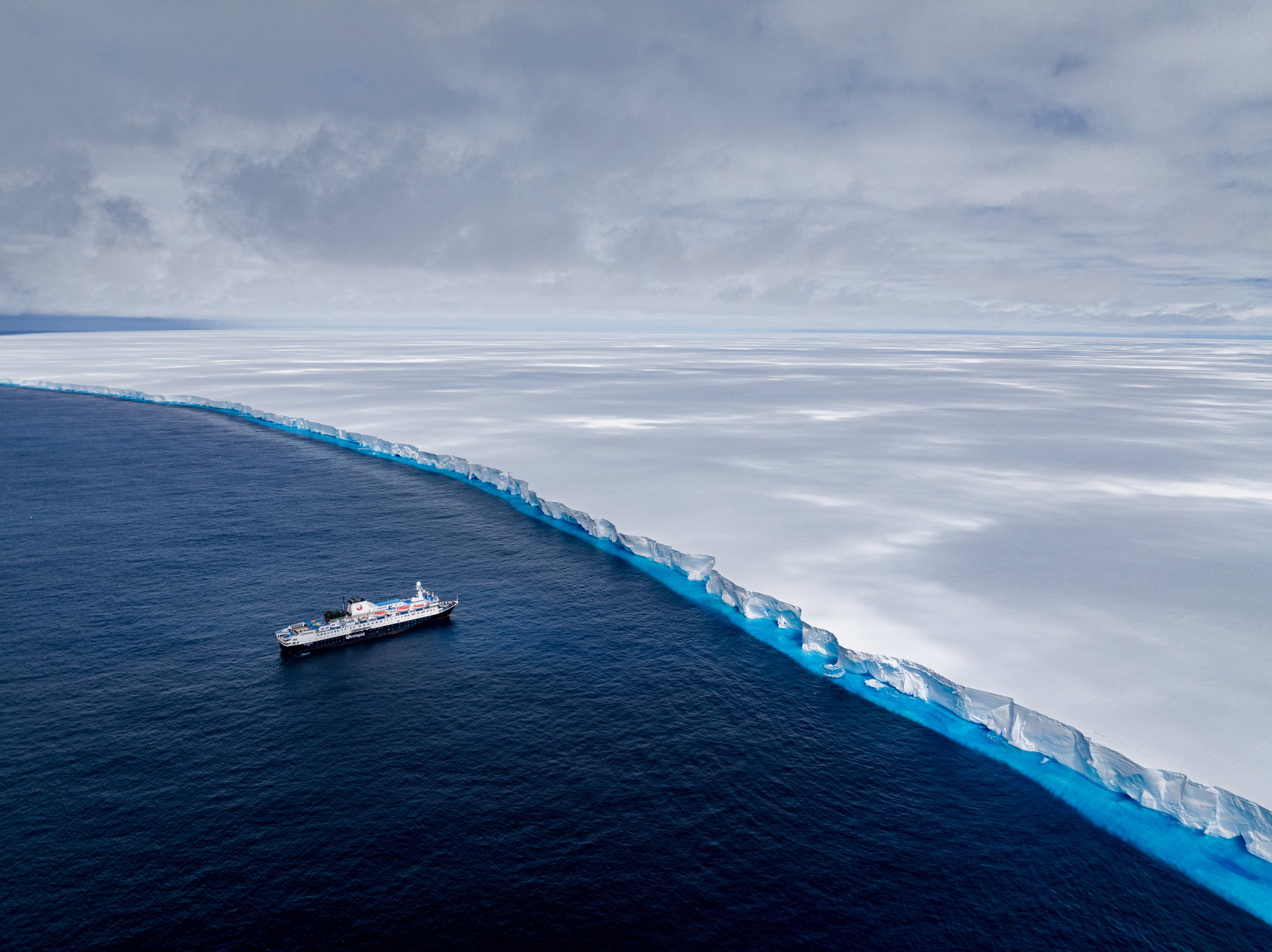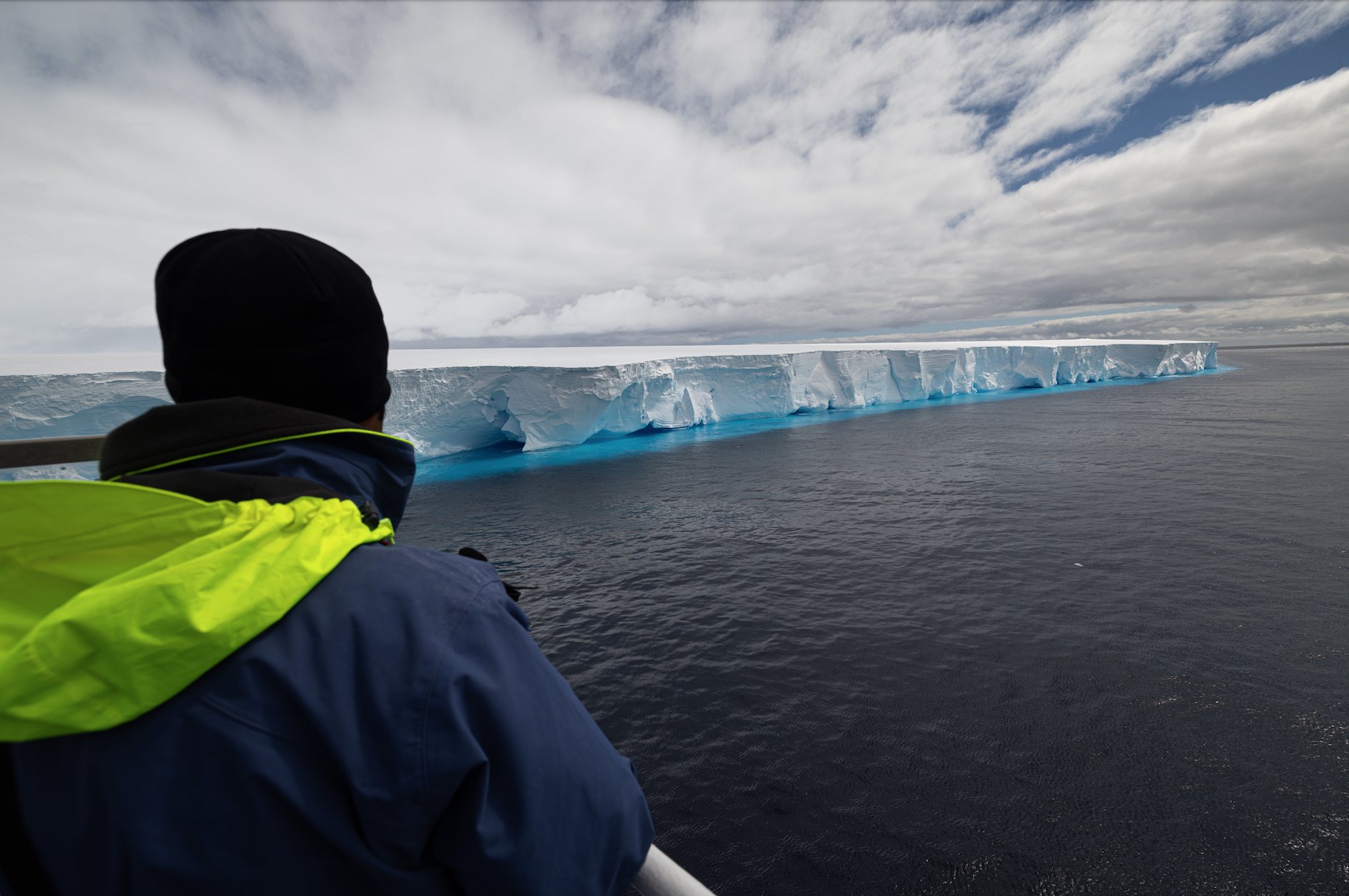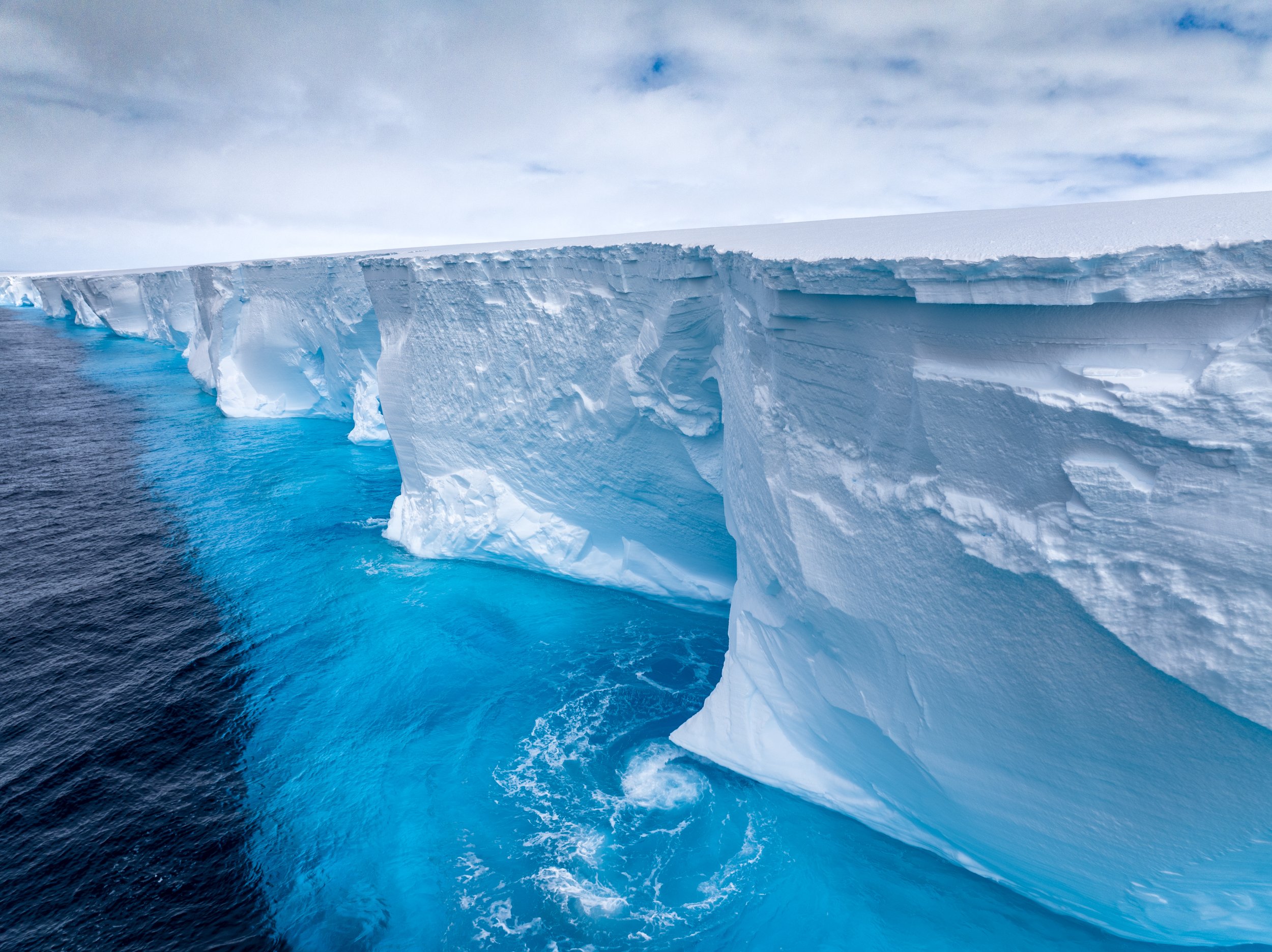Photos and Video of A23a, the Largest Iceberg In the World
This latest voyage is a highlight of my career. I captured drone footage of Iceberg A23a, the largest iceberg in the world while working with Intrepid Travel. I am currently working as an expedition guide, drone pilot and photographer on the Ocean Endeavour. This voyage took us from Ushuaia, Argentina, the Falklands, South Georgia (a British Protectorate), and Iceberg A23a before going to the Antarctic Peninsula.
A23a Isn’t Just a Big Iceberg, Its ENORMOUS
“When we say she’s big, she is 40 nautical miles by 32 nautical miles,” Emily Gregory, a Marine Ecologist and fellow guide, tells me. “She is absolutely enormous and definitely shows up on our sonar system”
While flying the drone 400 ft or more, the camera can’t see the opposite side of this massive chunk of ice. A23a is roughly 3x the size of New York City. The ship, the Ocean Endeavour, is absolutely dwarfed by it.
Bringing Its Own Ecosystem
While approaching A23a I could feel the air change, a dip in the temperature. Katabatic winds come down off the iceberg’s plateau. Katabatic winds are also called “Fall Winds” and are usually caused by gravity pulling cold-density air downslope, speeding up as it goes.
The amount of cold, fresh water coming off of this cold block of ice sitting in the ocean, releasing nutrients and bacteria, has allowed for a localized enrichment of nutrients due to the upwelling of seawater. A massive influx of whales, birds and other wildlife occurs to take advantage of this feeding opportunity.
A Drone Pilot Challenge
Having the katabatic winds come off the iceberg, lent itself unique challenges as a drone pilot. Flying underneath A23a is very calm. Like any average, good-day flight. As soon as the drone went above the plateau, those powerful winds would blow the drone back. I needed to do another loop around and bring the drone back very close to the water, at one point hoping I had enough battery for the maneuver.
This is Four Decades In The Making
A23a broke off the Antarctic coastline in 1986. “She grounded for around four decades [in the Weddell Sea] before she started to move slowly,” says Gregory, “Now she has made her way into the Circumpolar Current. Started to make her way to warmer waters.”
As the iceberg moves from some of the coldest waters on the planet, it has begun to melt and break up.
A23a Career Highlight
Being able to see the giant island of ice, that has been floating in the ocean for almost my entire life, is one of the highlights of my career. Knowing the iceberg is beginning to melt and break up, brings even more value to this incredible experience. Antarctica is truly the last wild place on our planet, so rarely interacted with humans. It is also one of the places we can see the effects of climate change clearest. I hope this incredible moment brings renewed interest in continuing to find ways of conservation for the incredible environments, full of wildlife like nowhere else on this planet.





